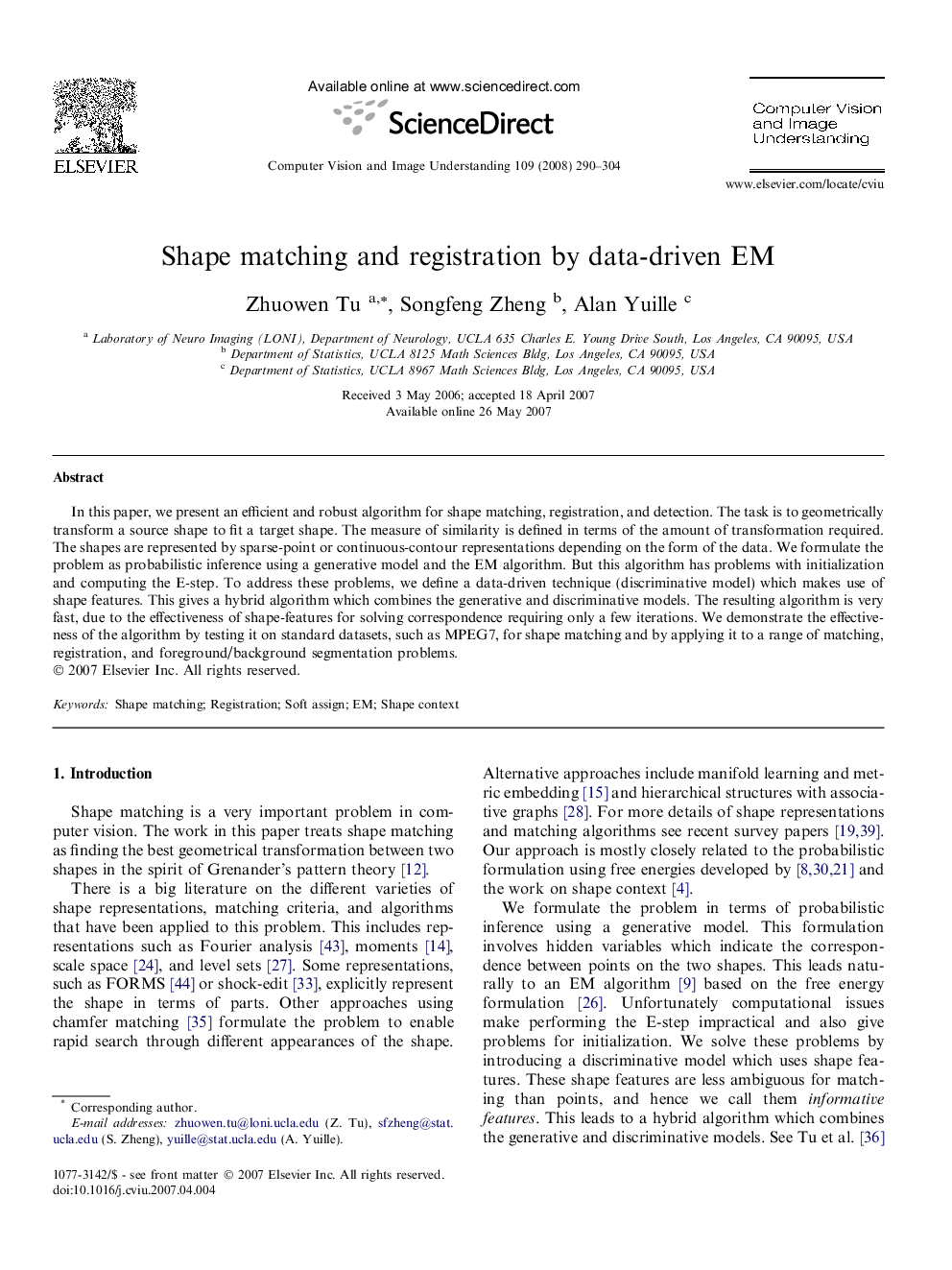| Article ID | Journal | Published Year | Pages | File Type |
|---|---|---|---|---|
| 527971 | Computer Vision and Image Understanding | 2008 | 15 Pages |
In this paper, we present an efficient and robust algorithm for shape matching, registration, and detection. The task is to geometrically transform a source shape to fit a target shape. The measure of similarity is defined in terms of the amount of transformation required. The shapes are represented by sparse-point or continuous-contour representations depending on the form of the data. We formulate the problem as probabilistic inference using a generative model and the EM algorithm. But this algorithm has problems with initialization and computing the E-step. To address these problems, we define a data-driven technique (discriminative model) which makes use of shape features. This gives a hybrid algorithm which combines the generative and discriminative models. The resulting algorithm is very fast, due to the effectiveness of shape-features for solving correspondence requiring only a few iterations. We demonstrate the effectiveness of the algorithm by testing it on standard datasets, such as MPEG7, for shape matching and by applying it to a range of matching, registration, and foreground/background segmentation problems.
